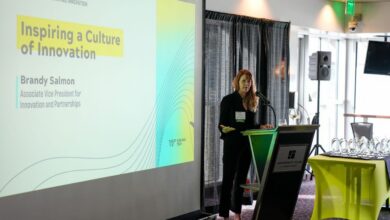Is green entrepreneurship the silver lining in combating the climate crisis?

A holistic approach with a complete paradigm shift in green entrepreneurship is probably the best coping mechanism for handling human-made climate crises
In recent years, we have been working towards embracing the ‘going green’ philosophy whether it is entrepreneurship, policy advocacy or lifestyle across the world. However, it is still in the primary stage.
The frequency of environmental catastrophes (such as loss of biodiversity, water crises, flash floods, forest fires and droughts) is high in different parts of the world, irrespective of their geographic location and national income.
The majority of businesses are significant contributors to global warming through greenhouse gas (GHG) emissions in the predominant sectors such as transport, manufacturing, energy and construction. Thus businesses must think outside the box and transform from traditional entrepreneurial design activities to innovative green components.
To make matters worse, the pandemic and the terrifying updates on the presence of nanoplastics in the human body have traumatised many of us to rethink the collective human actions aimed at rapid business growth and its bi-products in the form of adverse climate devastation.
The extent of these adversities is so intense that it is influencing our physiological and mental health. Recent studies also highlight the concerns related to mental trauma, stress and fear of uncertainty among Generation Z due to frequent natural disasters.
When it comes to businesses, often they follow their economic interest and target windfall gain as the core objective in performing entrepreneurial activities, not the social interest. Extensive exploitation of minerals, metals and fossil fuels is driven by business activities. It contributes heavily to environmental degradation and resource depletion.
In that whole process, natural resource extraction has increased significantly and it is expected to multiply more in the future, studies revealed. The UN Environment Program (UNEP) has revealed that the consumer goods sector added more adversity by becoming one of the major contributors to waste, particularly through the use of non-recyclable packaging materials.
The production and disposal of packaging materials by businesses contribute significantly to global waste and contribute to ecological balance near subsistence.
We cannot deny that the unjustifiable entrepreneurial strategy, abundance supply mindset and related intentional ignorance from past decades are responsible causes.
Moreover, keeping aside the demand side, the modern consumer, its contribution to the environmental crisis is generally invisible and rarely discussed. Rapid economic growth caused an influx of income prosperity, and e-commerce platforms have given ample leverage to status-conscious modern consumers in purchasing tons of smart modern gazettes, consumer durables and a variety of nonperishable food items, etc.
Ironically, consumers in their busy lives rarely analyse their consumption behaviour and generate daily residue from excessive buying. Nevertheless, globally, an average person generates approximately 0.74 kilograms of waste.
We can see from World Bank and UN Environment programme’s data that in high-income countries, it generates about 34% of the world’s waste, equating to roughly 1.2 kilograms per person per day, and in low-income countries, it is significantly lower, around 0.55 kilograms daily.
Eventually, that generates extravagant pressure on the local municipality, which is responsible for waste collection and disposal, compelling it to hunt for an efficient strategy and new landfill areas. According to the Global Waste Management Outlook 2024, Municipal solid waste generation is projected to grow from 2.1 billion tons in 2023 to 3.8 billion tons by 2050.
The absence of responsible consumerism is widely visible, such as willingness to proper waste segregation and disposal, recycling and upcycling, and a positive attitude towards learning green consumer behaviour. Often we focus on the supply chain and associated sustainable practices.
In the current scenario, it is crucial to develop a sustainable demand side chain, starting from the initial point of want or need for a good until its disposal, after it reaches the end user. It is also evident that businesses and regulators are ignorant about the demand side and least interested in needful strategies and initiatives in educating and awareness-building campaigns.
This missing link could be identified and incorporated effectively in restructuring the sustainability aspects of the supply chain under green entrepreneurship practice. Further addressing the demand side could certainly assist the circular economy principle goal achievement.
The frequent environmental disasters and related incidences are pointing towards market failure. Adam Smith’s invisible hand is unable to correct it. Negative externalities are creating an overall impact on everyone, irrespective of our direct association and contribution to the production process.
Therefore, the regulatory bodies must show prompt action in framing strict regulations for existing and new businesses so that they can adhere to green entrepreneurial practices as the nation’s top priority. Businesses should be forced to make their policies transparent and completely green by incorporating a social interest component.
And in that whole process, the goal of social benefit could be addressed. This could also promote sustainable use of local resources, search for energy-efficient methods, fair prices, recyclable or reusable packaging, reduced carbon print, ethical practices, inclusivity, etc.
In the European Union, countries are inclined to levy plastic tax if applicable, and targeting all packaging will come up with recycled and reused options along with long life cycles and repairable by 2023.
Above all, an innovative transformation in the new-age entrepreneurial designing fundamentals is predictable, which could help businesses in their green entrepreneurial journey.
We are not disappointed, there are traces of positive changes as the environment-friendly products and services are gaining popularity with a specific segment of consumers. And some businesses are moving closer to green practices and very few have taken the role of green business ambassadors globally.
The big business ambassadors like Nestle, Danone, Henkel, Adidas Patagonia, and Beyond Meat pledged to take a step forward for the coming future. However, they are ineffective in creating sustainable green business practices and trickle-down impact for the smaller ones.
Surprisingly, we have more evidence coming up of small businesses that are leading and playing a major role in creating eco-friendly products and green energy generation. The general guidelines on green entrepreneurship, conceptual explanation, strategy and financial provisions, and other related support may be rewarding, especially for small businesses, and can help in creating a level playing field due to the big corporates’ dominance in the market.
The new technology, digital tools and media can be the game changers in the spread of green entrepreneurship and responsible consumerism knowledge campaigns for the promotion of healthy practices. It is an integrated step by consumers, businesses and economies that could transform the entire structure in the hope of mitigating the adverse environmental impacts.
Pinki Shah is a former Professor of Business Administration at the University of Liberal Arts Bangladesh (ULAB). She is a currency mentor (volunteer) at ONE Hub & CCI, Ottawa, Canada.
Disclaimer: The views and opinions expressed in this article are those of the author and do not necessarily reflect the opinions and views of The Business Standard.



